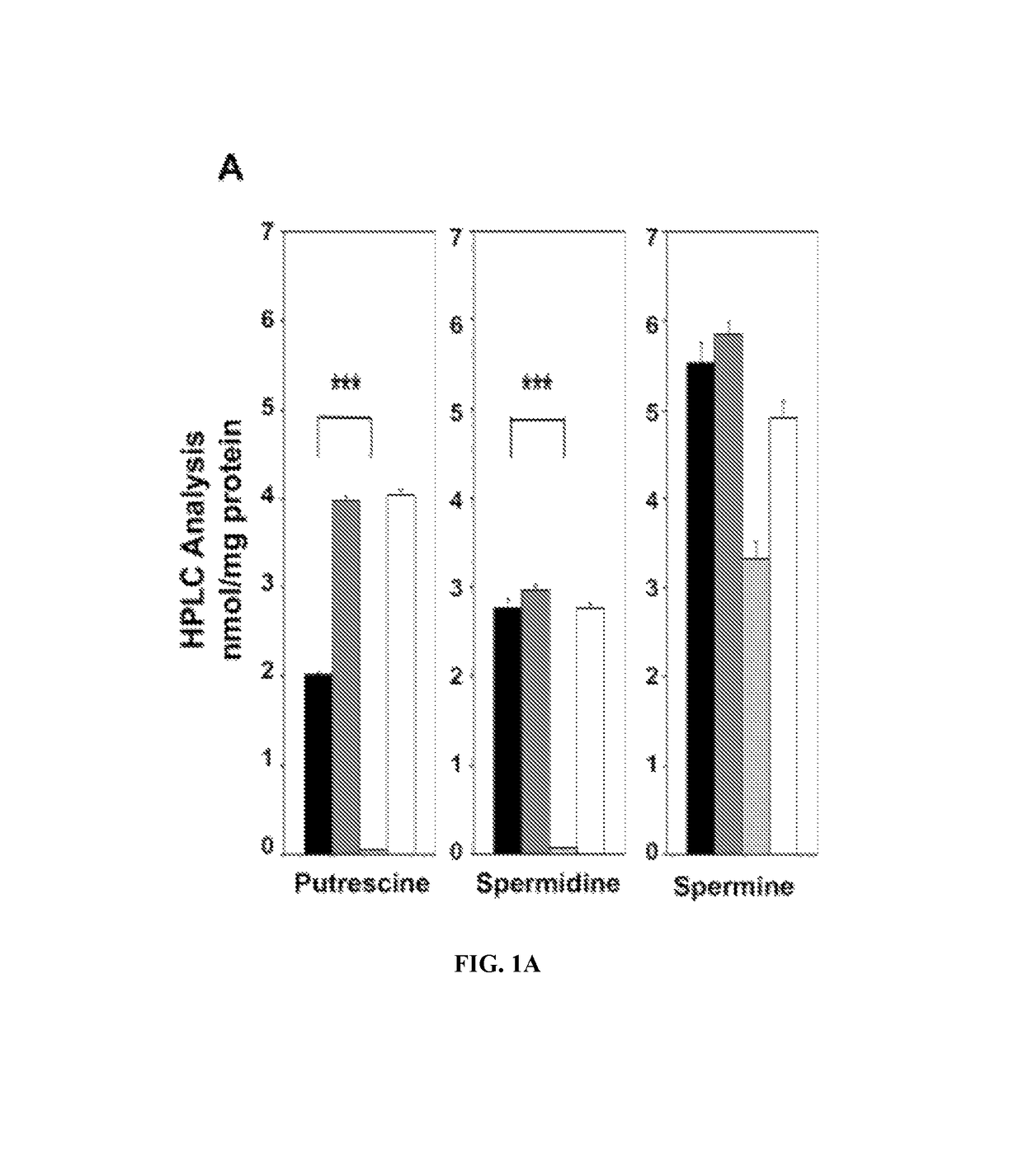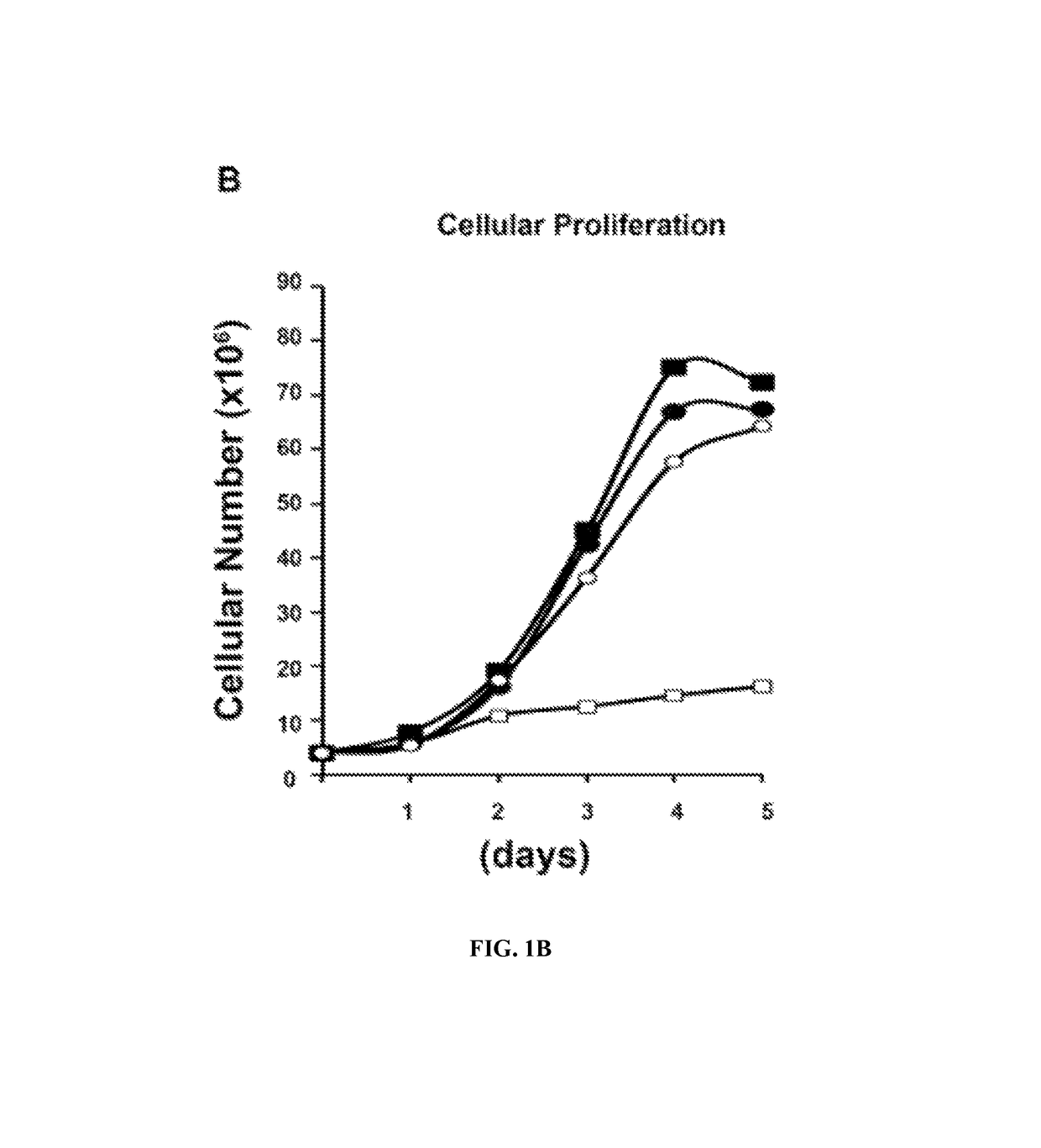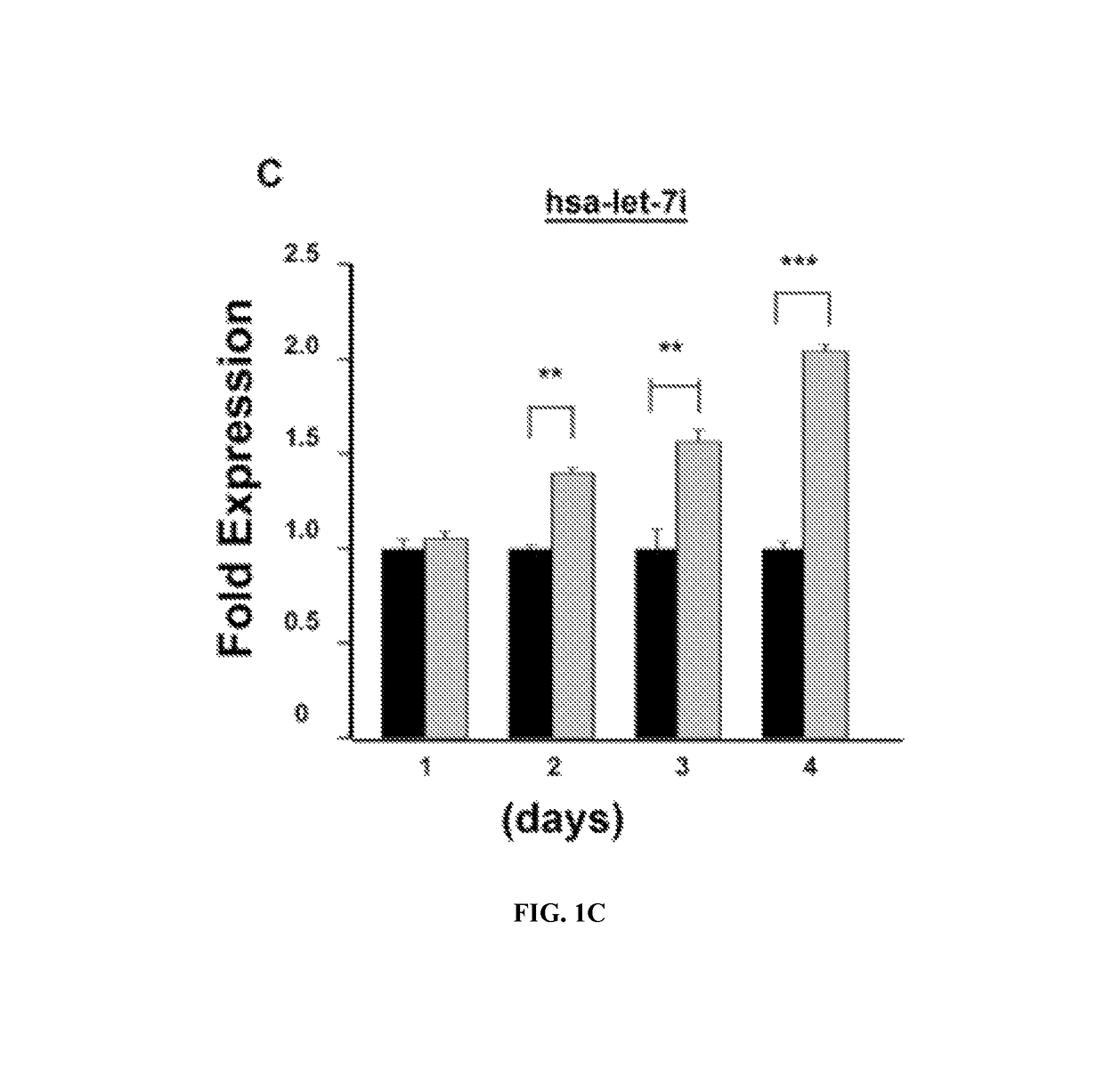Predictive markers for polyamine inhibitor cancer therapies
a technology of polyamine inhibitors and cancer therapies, applied in the field of cancer biology and medicine, can solve the problem that administering may render an unresectable tumor resectabl
- Summary
- Abstract
- Description
- Claims
- Application Information
AI Technical Summary
Benefits of technology
Problems solved by technology
Method used
Image
Examples
example 1
Depletion Suppresses Growth and Alters Levels of Non-Coding RNAs
[0213]To address the questions surrounding polyamine's function in cancer, it was reasoned that the polyamines might interact ionically with any number of macromolecules, but could do so strongly with RNA (Watanabe et al., 1991), and covalently with the putative translation factor eIFSA (Saini et al., 2009). It was hypothesized that the polyamines, acting independently or via eIFSA, might affect levels of non-coding RNAs. It was first established that DFMO intervention affected intracellular polyamines resulting in depleted intracellular polyamine pools. DFMO is an irreversible suicide inhibitor of ornithine decarboxylase (ODC) that inhibits carcinogenesis in both mouse models and in humans. Therefore, colon cancer cells were treated with DFMO and the intracellular polyamine pools of cells were measured using high performance liquid chromatography (HPLC). Treatment with DFMO resulted in depletion of putrescine and sperm...
example 2
unction of Let-7 Abrogates Polyamine Mediated Effects on HMGA2
[0220]To determine if polyamines were influencing specific gene expression via let-7-mediated mechanisms, several putative let-7 target genes were examined. The high mobility group A2 (HMGA2) factor is a previously validated target of let-7 (Mayr et al., 2007; Lee and Duda, 2007) that is associated with poor survival in colorectal cancer (Wang et al., 2011). Moreover, the HMGA family is widely expressed during embryogenesis and in benign and malignant tumors (Fusco and Fedele, 2007). In order to identify whether polyamines modulated HMGA2 protein levels, cellular polyamines were depleted and Western blots performed, which documented robust HMGA2 depletion by 72 h of DFMO treatment as well as lowered levels of LIN28, the upstream, negative regulator of the let-7 family (FIG. 2A). Next, whether the observed effects were polyamine specific were examined by supplementing the medium of DFMO-treated cells with putrescine. Putre...
example 3
ulates HMGA2 and LIN28
[0224]Effectors of polyamine metabolism that could account for the widespread changes observed were identified. Polyamines influence protein synthesis, in part, through a novel post-translational modification of eIF5A24. eIF5A is the only protein known to undergo the unique modification called hypusination. Hypusination occurs via a two-step mechanism that includes transfer of a 4-aminobutyl group from the polyamine spermidine to an evolutionarily conserved lysine residue in eIF5A, followed by b-hydroxylation of the deoxyhypusine intermediate. Furthermore, depletion of the hypusine-precursor spermidine by treatment with DFMO causes a corresponding depletion in the hypusinated eIF5A protein (Park et al., 2005). Vertebrates encode two isoforms of eIF5A with differing tissue expression patterns. The eIF5A1 isoform is ubiquitously expressed, but eIF5A2 is found only in specific tissues and some cancers (Caraglia et al., 2011).
[0225]Therefore, the possibility that p...
PUM
| Property | Measurement | Unit |
|---|---|---|
| temperatures | aaaaa | aaaaa |
| pH | aaaaa | aaaaa |
| pH | aaaaa | aaaaa |
Abstract
Description
Claims
Application Information
 Login to View More
Login to View More - R&D
- Intellectual Property
- Life Sciences
- Materials
- Tech Scout
- Unparalleled Data Quality
- Higher Quality Content
- 60% Fewer Hallucinations
Browse by: Latest US Patents, China's latest patents, Technical Efficacy Thesaurus, Application Domain, Technology Topic, Popular Technical Reports.
© 2025 PatSnap. All rights reserved.Legal|Privacy policy|Modern Slavery Act Transparency Statement|Sitemap|About US| Contact US: help@patsnap.com



